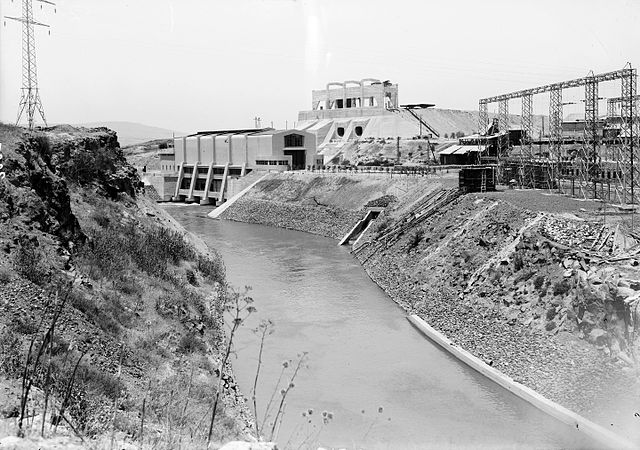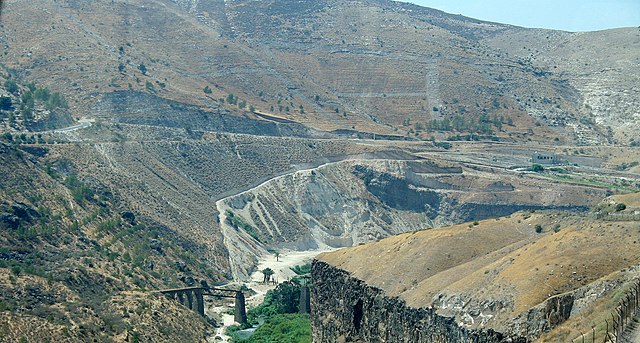Naharayim, historically the Jisr Majami area, is the area where the Yarmouk River flows into the Jordan River. It was the site of the "First Jordan Hydro-Electric Power House", constructed between 1927–33, and located near an ancient Roman bridge known as Jisr Majami. The site was named by the Palestine Electric Company which assigned "proper names" to the "different quarters of our Jordan Works", one of these being the "works as a whole including the labour camp" to be called "Naharaim", and another being the site of the "Power House and the adjoining staff quarters, offices" to be called Tel Or. Most of the plant was situated in the Emirate of Transjordan and stretched from the northern canal near the Ashdot Ya'akov in Northern Mandatory Palestine to the Jisr el-Majami in the south.
1935 Palestine Electric Corporation General Scheme for the area around the First Jordan Power House
Nahariyim/Baqoura region in 1953 and now
First Jordan Hydro-Electric Power House, circa 1933
Homes in the workers village, 1932/1933
The Yarmuk River is the largest tributary of the Jordan River. It runs in Jordan, Syria and Israel, and drains much of the Hauran plateau. Its main tributaries are the wadis of 'Allan and Ruqqad from the north, Ehreir and Zeizun from the east. Although the Yarmuk is narrow and shallow throughout its course, at its mouth it is nearly as wide as the Jordan, measuring thirty feet in breadth and five in depth. The once celebrated Matthew Bridge used to cross the Yarmuk at its confluence with the Jordan.
Yarmuk River near the Naharayim/Baqura Area
Yarmouk River
Railway bridge over the Yarmouk River, destroyed during the Night of the Bridges in 1946
Israeli-Jordanian border at the confluence of the Jordan and Yarmuk Rivers







